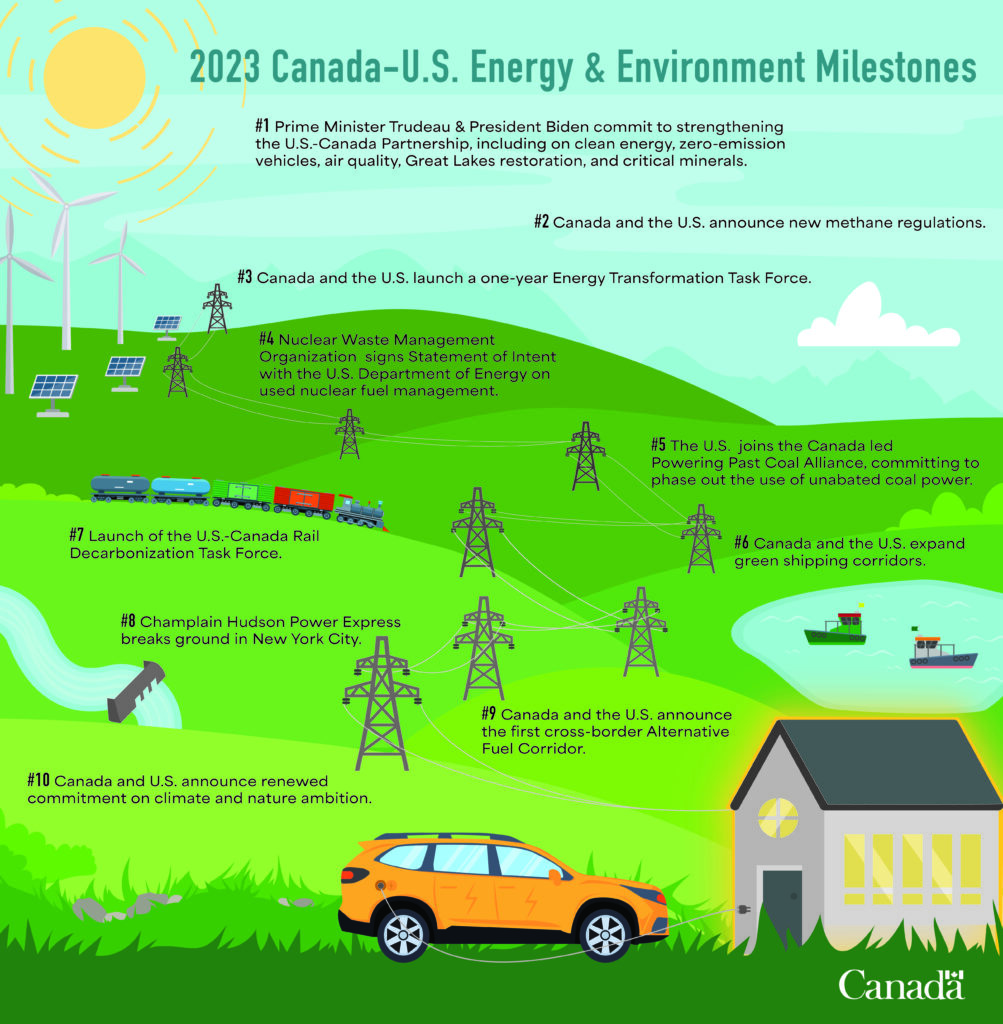1: Prime Minister Trudeau & President Biden met in Ottawa and committed to strengthening the United States-Canada Partnership. The leaders agreed to inter alia: update the Joint Action Plan on Critical Minerals Collaboration; protect and restore the Great Lakes ecosystem; coordinate efforts to develop secure and reliable nuclear fuel supply chains; support greater access to zero-emission vehicle (ZEV) infrastructure; and undertake a joint technical review and assessment of the Canada-U.S. Air Quality Agreement. Read more at this link.
2: As part of commitments made under the U.S.-led Global Methane Pledge, the U.S. announced final regulations for greenhouse gases and volatile organic compounds emissions from the oil and gas sector. Canada released draft regulations aimed at reducing methane emissions from the oil and gas sector by 75% below 2012 levels by 2030.
3: During President Biden’s visit to Canada, the leaders launched a one-year Energy Transformation Task Force to focus on securing and strengthening renewable energy and electric vehicle supply chains, critical minerals and rare earths, grid integration and resilience, advanced and conventional nuclear energy, among other areas that advance our collective energy security.
4: The Nuclear Waste Management Organization signed a Statement of Intent on used nuclear fuel management with the U.S. Department of Energy. The agreement reflects the U.S. and Canada’s shared commitment to safely managing used nuclear fuel, including that from Small Modular Reactors. The statement follows the commitment made by Prime Minister Trudeau & President Biden to co-operate on nuclear energy and achieve shared net-zero and energy transition goals.
5: The U.S. signed onto the Canada-led Powering Past Coal Alliance, committing to phase out the use of unabated coal power.
6: Canada and the U.S. announced a plan to expand green shipping corridors and help decarbonize the marine sector in major shipping areas, building on ongoing work in the Great Lakes and the St. Lawrence Seaway, and along the east and west coasts.
7: Canada and the U.S. announced the creation of the Rail Decarbonization Task Force, a joint task force to research and test the safe integration of energy rail technologies, coordinate strategies to accelerate the rail sector’s safe transition to zero-emission technologies, and collaborate on the development of a U.S.-Canada rail sector net-zero climate model by 2025.
8: The Champlain Hudson Power Express, a 339-mile transmission line that will bring up to 1,250 MW of clean electricity from the province of Quebec to New York City, broke ground on a new converter station. The line is scheduled to be operational in 2026 and is expected to deliver enough clean energy to power over one million homes.
9: The first Canada-U.S. Alternative Fuel Corridor was announced to ensure that the large number of Canadians and Americans crossing the border every day can get from point A to point B with confidence in their zero-emission vehicle.
10: Canada and the U.S. committed to renew and accelerate joint efforts to combat the climate crisis and increase economic benefits from collaboration, including further work to reduce methane emissions, achieve net-zero power sectors by 2035, align estimates on the social cost of greenhouse gas emissions, advance a Buy Clean agenda for national government procurement, promote trade in low-emission goods, and conserve, restore, and sustainably manage forests.
